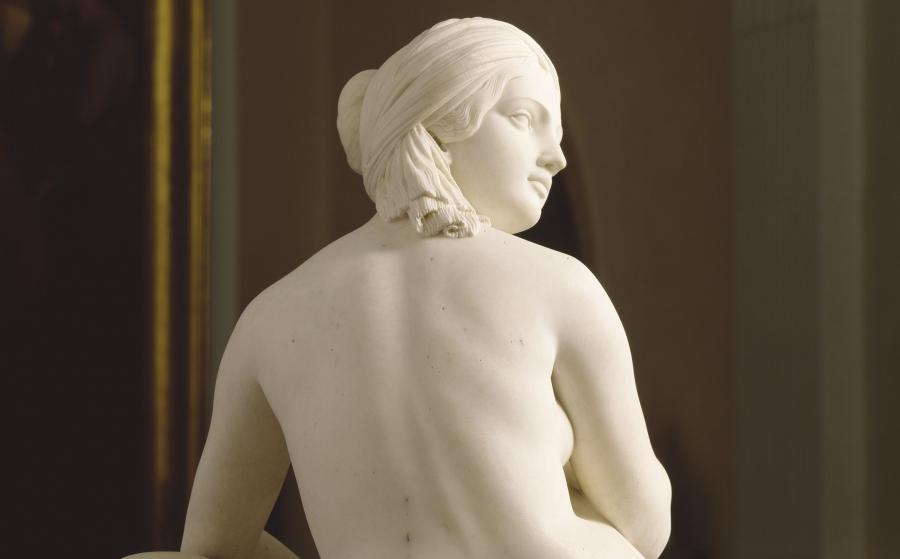Odalisque
Information sur l’artiste
JAMES PRADIER [GENEVA, 1790 – BOUGIVAL, 1852]

Odalisque, 1841.
Image © Lyon MBA - Photo Alain Basset
This young female nude, who sits directly on the floor and whose clothing has slid to the ground, is an image of an odalisque. The term, which derives from the Turkish odalik, was used to describe a woman living in the Sultan’s harem under the Ottoman Empire. Her turban and the peacock feathered fan she is holding are evidence of her position. In the imagination of Western artists, the figure of the odalisque was associated with a fantasy world of pleasure and sensuality. Orient was popular in the 19th century, and these women were often depicted in paintings and literature, yet the subject was not often portrayed in sculpture: this marble statue by James Pradier is a rare example.
Here, the sculptor remains partly faithful to classical traditions: the chosen subject is a female nude, inspired by ancient statues of Venus, with a finely-polished finish on the marble and seemingly perfect facial features. However, the artist also achieves something new and surprising, challenging certain conventional ideals surrounding the portrayal of women. The model is shown sitting directly on the floor, thus breaking with classical sculpture norms of decorum. Far from an image of cold, glacial beauty, she is shown stripped bare and sensual, reaching out to the viewer with her demeanour and her body, at once idealised and realistic. Pradier dares this modern approach because of the exotic nature of the subject: it allows him more freedom and is above all a pretext for creating this powerful, sensual image of a woman.
1841
Marble
H. 104; L. 94; D. 67.5 cm
Received from the French government in 1843; long term loan from the Centre national des arts plastiques
Inv. H 793





